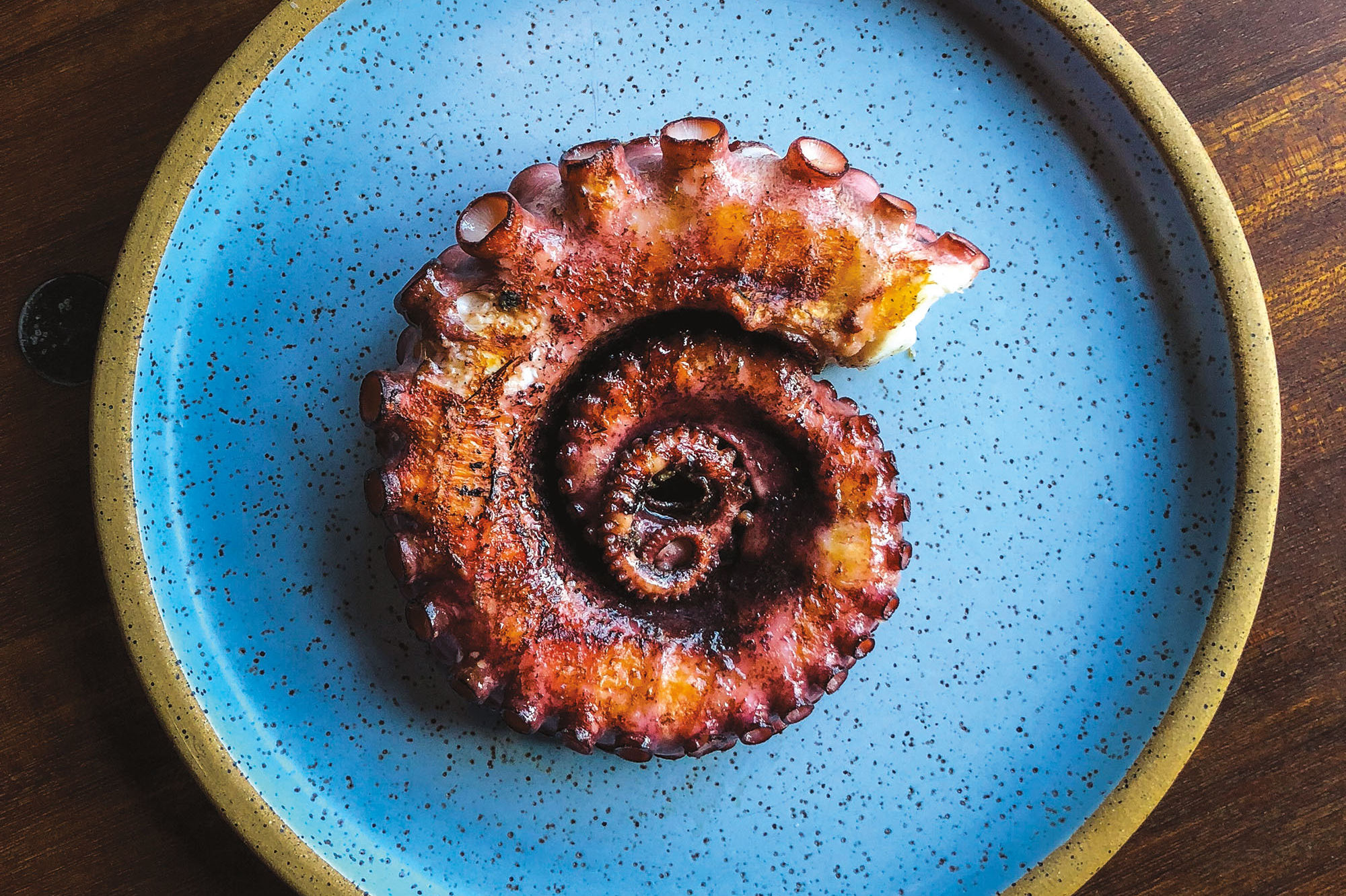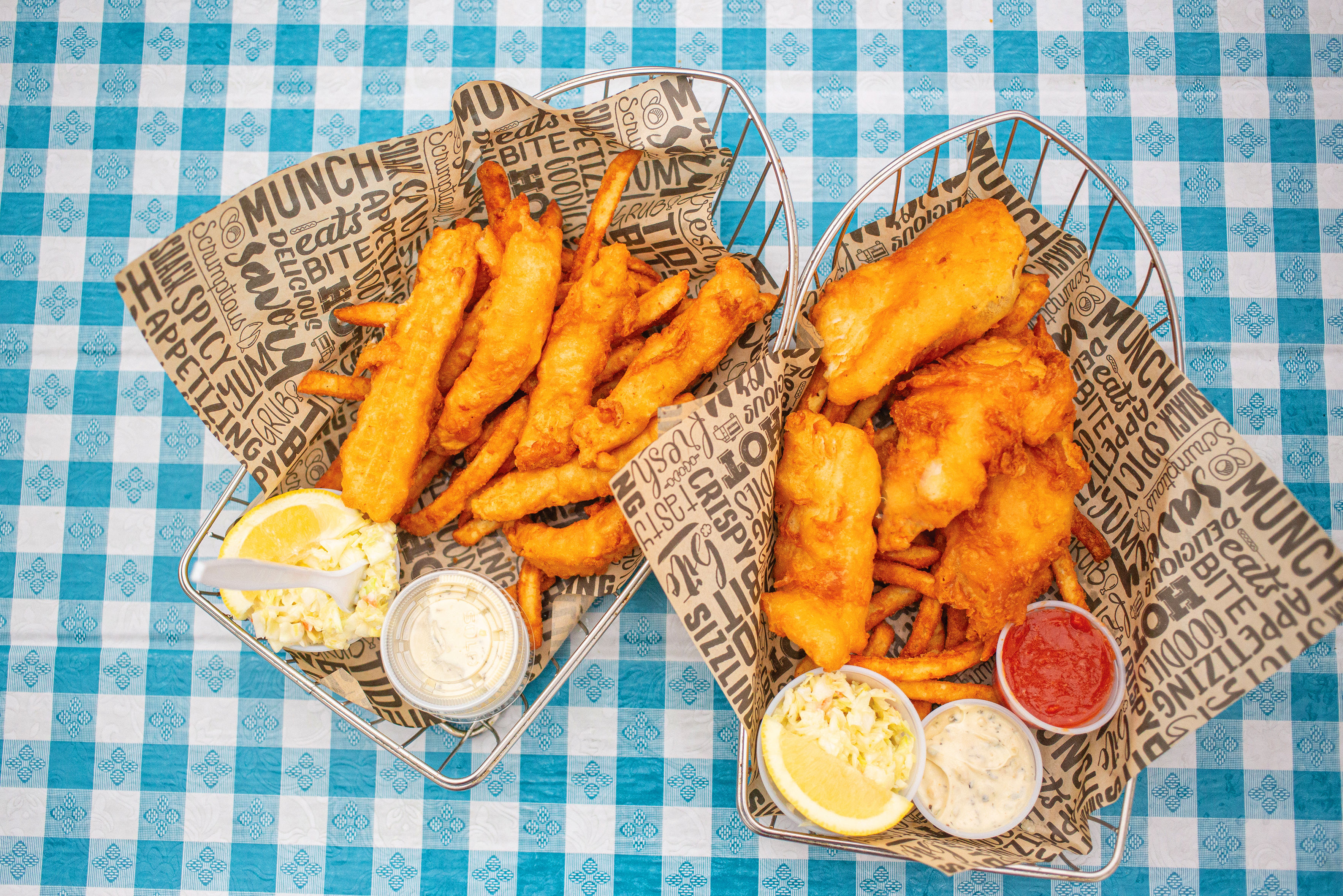This Seafood Takeout Window in Netarts Is Worth the Drive
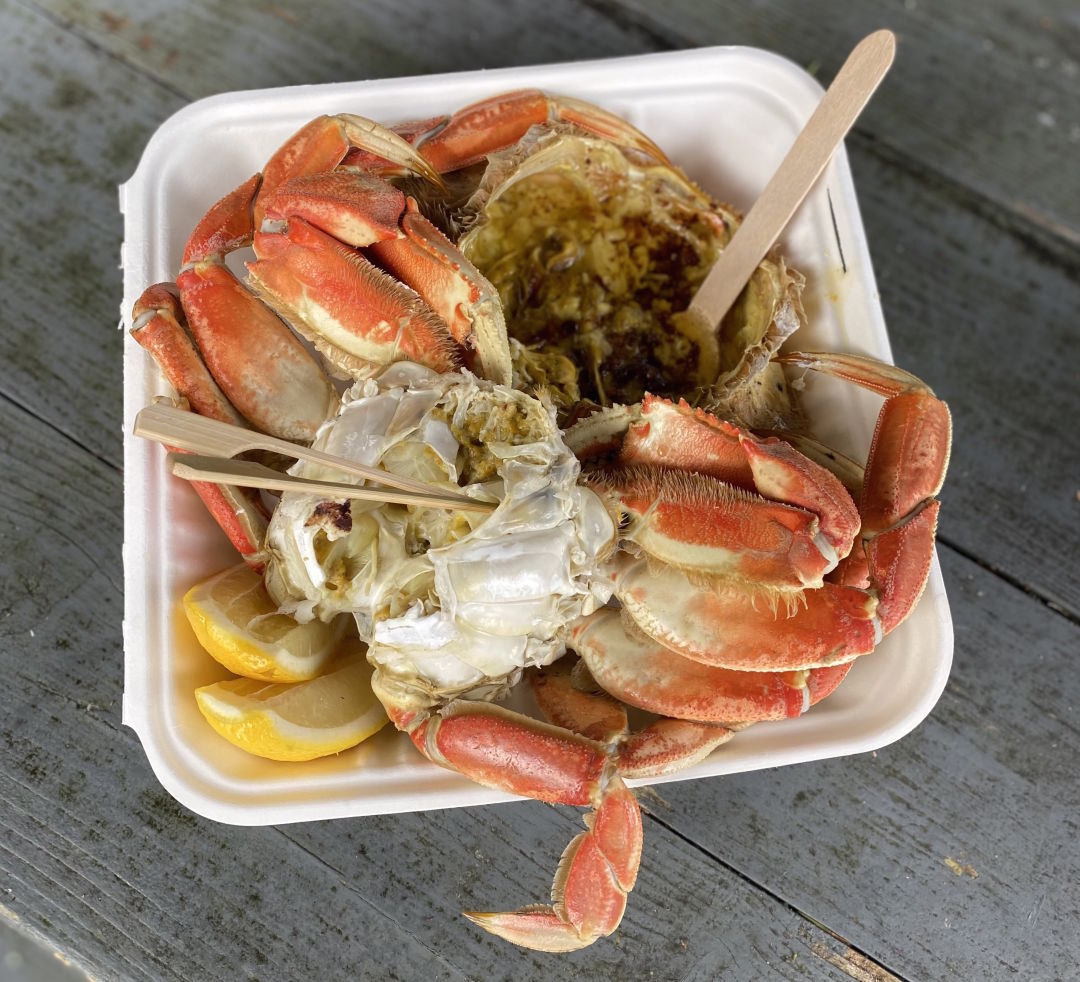
Dungeness crab at Nevør Shellfish in Netarts
Image: Jordan Michelman
“I’m done with fine dining,” says Jacob Harth, formerly the chef at Erizo, a $125-per-person seafood restaurant with a 20-course menu focused on bycatch, a term used to describe the lesser aquatic species fishers pull up by accident while gathering big-money sea creatures. When a Portland Monthly writer visited Erizo in 2019, she described these cuts as “trash fish” (affectionately!) and reflected on the ways in which Oregon’s sea-to-table culture lagged behind the tail-to-fin traditions on the Atlantic. The restaurant closed indefinitely in the early days of the pandemic, just one of the many shutdowns in the grim ongoing tally.
But permit me just a dash of hungry optimism, because the second acts are coming—in which nimble and driven chefs pivot away from the constraints of traditional restaurant orthodoxy into new concepts and expressions. I’m excited, hopeful even, about what comes next for food in the Pacific Northwest, and there’s a restaurant on the Oregon coast that captures the moment in its essence. “Fine dining is done for now, and this is what I want to be doing instead,” the young chef, not yet 30, tells me across the service counter at his new venture, Nevør Shellfish Farm.

Nevør Shellfish Farm
Image: Jordan Michelman
If this is what the future of restaurants looks like in the Pacific Northwest, I’m done with fine dining, too. Nevør Shellfish Farm is an operational oyster and shellfish production facility, as evidenced by the enormous bags of oysters gathered around the seating area and road barrier, forming a sort of working decor. By way of entertainment, there is a large conveyor belt and shucking system automatically pulling shellfish from the shell. It houses a modest kitchen, which Harth and his small team took over in November 2020, establishing a residency of sorts and transporting Erizo’s take on seafood diversity and sustainability alongside Harth’s long-standing connections in the seafood industry into a sort of nouveau-retro coastal cuisine shack.
The results‚ particularly if you love Pacific Northwest seafood, are disarming, understated, and at times extraordinary. Netarts Bay is visible from the limited outdoor seating, a half a dozen or so picnic tables and benches, some covered, some exposed to the elements. A soundtrack of ’90s grunge rock blared from loudspeakers—“Spoon Man,” “Black Hole Sun”—and the parking lot filled up with visitors from near and far.
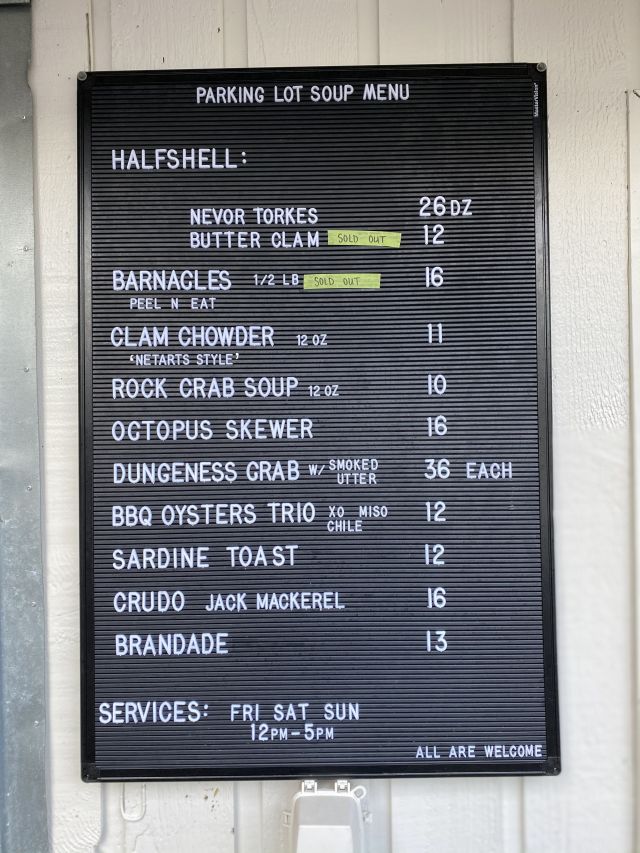
A recent weekend menu at Nevør, before most items started selling out
Image: Jordan Michelman
I more or less suggest ordering the entire menu, which prices out to roughly the equivalent of a single seating at the old Erizo, but comfortably feeds three. Oysters are, naturally, a required order, and the Nevør Torkes ($26 per dozen) are served simply, as local as it gets—grown and shucked within mere yards of the restaurant—alongside finely shredded horseradish and a section of lemon. Platings get more adventurous from there: a trio of BBQ oysters ($12) with XO miso chile sauce, outstanding jack mackerel crudo ($16) with good olive oil and capers, skewers of buttery giant octopus ($16) slathered in a sort of under-the-sea BBQ sauce, and peel & eat barnacles ($16 per half pound), an old favorite from Erizo.
Good bread is required as an accompaniment for good seafood, and Harth sources his from Ken’s Artisan Bakery back in Portland. It plays a primary role in Harth’s take on sardine toast ($12): a whole raw butterflied sardine, dressed in yuzu kosho (a gently fermented condiment that uses the juice and zest of Oregon-grown yuzu citrus), layered atop a fat puck of grilled crunchy loaf, slathered in Harth’s own house-made butter. “It’s a long process to make this butter,” the chef tells me, which includes a kiss of Oregon green alder woodsmoke and weeks of fermentation. Watch also for the limited-availability uni toast.
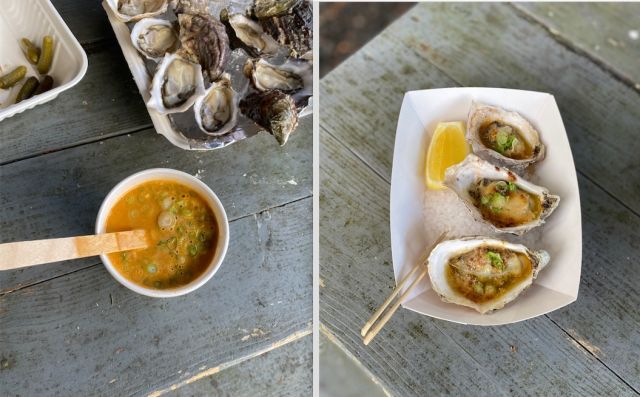
Soup and oyster options
Image: Jordan Michelman
Bread is also essential to Harth’s brandade ($13), the classic salt cod Atlantic peasant dish, endlessly riffed upon in fishing communities across Spain, France, and Italy but rarely seen on the West Coast. Instead of the traditional salt cod, Harth uses a salted and preserved whiting, also known as hake. I’m a sucker for this fish—I once ate a hake and leek pie at St. John in London that left me forever converted—but it’s considered bycatch in the Pacific, and primarily sold off for use in imitation crab meat. Harth plays it really simple with this recipe, whipping the whiting together with potatoes, cream, and garlic, then topping with a melted crust of Tillamook Reserve white cheddar. “The cheese is from right up the street,” says Harth, referring to the massive Tillamook Creamery HQ just 20 minutes away in the eponymous dairy farming town. The end result is a kind of Pacific Northwest brandade, served with another big hunk of bread for ripping and dipping. Ours was gone almost instantly. If brandade happens to be something you grew up eating, you will not find a better one within a thousand miles or more (with respect to however your grandma makes it).
But for all the talk of bycatch and tail-to-fin, the show stealer here is the whole Dungeness crab, pulled from Netarts Bay young and soft to the chef’s specifications. “When the ocean season is closed, crabbers are allowed to fish in the bay,” explains Harth, “and these crabs are younger than the much larger crabs that grade higher. The flesh is sweeter, and ocean water gets in there, so it’s almost brined in-shell. We pick out these crabs specifically.” Harth serves his crab uncracked due to COVID health protocols (your very own take-home crab crackers are available for $5 and make a nice souvenir), offered simply in a half-shell takeaway box with wooden picks and sections of lemon. But look closer—Harth has made use of every ounce of the aquatic beast in this set, carefully scraping off the crab’s unctuous fatty innards (“crab butter”) into the back of the upturned shell, alongside house cultured and smoked butter. It forms a sort of sauce into which bits of the rest of the crab can be dipped.
Really good crab like this sort of overtakes you, propelling the diner into something like a feral trance. I left my own body for a moment, wrestling with the great beast, hands whirring, dipping, cracking, as I astral-projected above myself to view the spectacle in shame and delight. By the end I had lost half an hour on my watch, like an alien abduction, slurping whole spoonfuls of the smoked butter crab guts, an umami bomb that tastes like God’s own seafood miso. It costs $35 and is honestly one of the best crab presentations I have ever had, somehow all the better for being eaten outside on a picnic table to a soundtrack of Soundgarden.
Harth and company are committed to making a go of it with this residency, which in 2021 means thinking beyond the daily menu into how these experiences can be translated at home. Items like that house-made butter, pickled chiles, mignonette, and hot sauce are available for takeaway, alongside quarts of chowder and bisque, all chilling in a glass case to the side of checkout. Harth is also personally managing a burgeoning delivery box program, in which the best of that week’s offerings at Nevør Shellfish can be dropped off at your doorstep within the Portland metro area. A sample box might include clams and broth, ready to be steamed together with step-by-step instructions, alongside ready to eat crudos and soups.
For now, the restaurant is BYOB, although beer and wine are coming once OLCC signs off, says Harth. Current beverage offerings include cold bottles of Mineragua, the club soda offering from Jarritos, which makes a perfect bubbly foil to the complex seafood on offer. (A nice Oregon pet-nat would be most welcome, as would a bottle of Savennieres chenin blanc, my deathbed seafood wine.)
Harth says they’re busy so far, even on stormy days, when people sit and eat inside their cars as the wind whips off Netarts Bay. While I was grateful for the sunshine on my visit, I’m almost sad not to have had the car hop experience. Something about eating all this wild ocean food in the middle of a maelstrom sounds oddly comforting. Maybe it was the music, maybe it was the food, but visiting Nevør Shellfish Farm stirred up some deep Pacific Northwest feelings in me, none more profound than the wish for rain.
